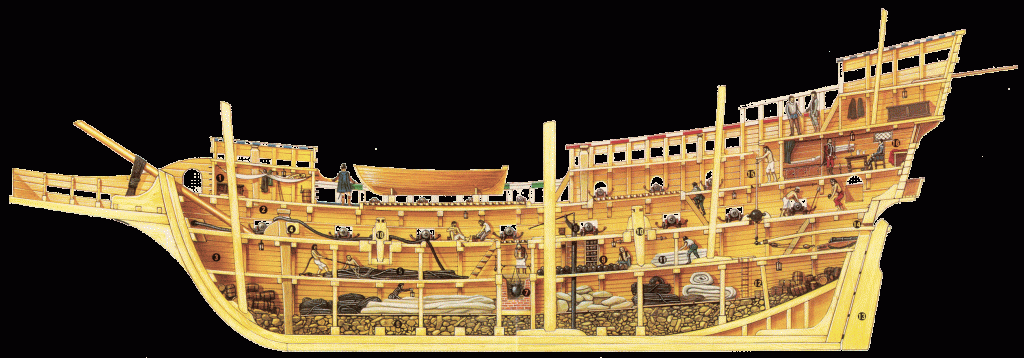Pre-Columbian Trips to America? Ballast! January 19, 2014
Author: Beach Combing | in : Medieval, Modern , trackbackImagine the excitement of the archaeologists who had gathered at NA-57 off the Florida coast near Fernandina in 1972. In some offshore piles they had found various bits of ‘rubbish’ from European settlers: ceramics, pipes, glass fragments… Nothing special you might think. But what was unusual was the dating. British settlements began in the area in 1763. Yet time after time they were bringing up earlier objects. There was a Tudor Green earthenware piece that conceivably dated to before Columbus and certainly had not been fired much more than a half century after the discovery of the New World. There was the Tygware fragment from a drinking mug that dated to the early seventeenth century. There was an unglazed Mediterranean amphrora of uncertain date. And best of all there were the ‘green glazed sand tempered earthenware sherds of medieval type’. You can almost hear the archaeologists cough nervously can’t you, particularly when they were told that though the sherds could be as late as the sixteenth century, they more likely dated to the thirteenth or fourteenth century? But the explanation had nothing to do with wind-tossed medieval ships or puritans running early from this or that Catholic monarch: there weren’t even any Roman or Babylonian trans-Atlantic pioneers. The explanation was ballast. Boats leaving London empty were frequently obliged to fill up with ballast dredged up from the Thames and this ballast was subsequently dropped elsewhere with various human refuse from previous centuries. In short, ballast = anomalous finds waiting to happen. In this case in Florida the archaeologists were able to identify where on the Thames the ballast had come from. In a short note one of the archaeologists reasonably states: As the range of ballast derived objects is defined we will be able to accurately assess the occasional sporadic exotic items that appear in coastal regions as evidence of this maritime activity rather than continuing to fuel the controversies about early and undocumented voyages.
Other examples of ballast causing confusion? Drbeachcombing AT yahoo DOT com
20 Jan 2014: British historian extraordinaire Mike Dash writes in with this. I am currently working on an essay about pre-Tasman-and-Cook European discoveries of New Zealand, for which there are several intriguing bits of anomalous archaeological evidence. The one that chimes with your article is the so-called ‘Spanish helmet’, a sixteenth century European helmet that was apparently dredged out of Wellington Harbour in 1904. Unfortunately there is very little provenance attached – we don’t know who dredged it out or exactly where. And the helmet itself does not display the sort of damage or marine encrustation one would expect if it had spent three or four hundred years submerged. Those who favour the idea that early Spanish or Portuguese explorers stumbled across New Zealand during their explorations of the Pacific suggest the helmet may have lain encased in a protective coating of anaerobic mud or silt. But the explanation preferred by theMuseum of New Zealand is that the helmet was ballast dumped in the harbour during a much later voyage. That sounds reasonable at first glance, but I have to ask: what sort of ship carrier [would use a] relatively light, relatively valuable antique helmets as ballast? If the helmet was dredged up from a river bed, as you show British ships were wont to do, it ought to display signs of longer immersion in water than the Spanish Helmet does.’ Thanks Mike!



